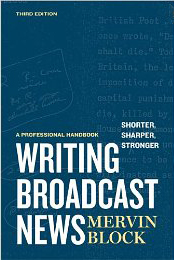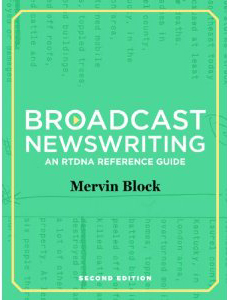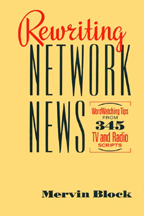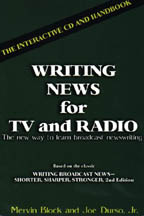The Bermuda Triangle has been denounced, debunked and declared dead—by scientists such as Carl Sagan, Isaac Asimov, and Neil deGrasse Tyson and by the U.S. Coast Guard. The Guard says emphatically it “does not recognize the existence of the so-called Bermuda Triangle as a geographic area of specific hazard to ships or planes….”
Yet Scott Pelley, the anchor of the “CBS Evening News,” has been treating the nonsensical—and non-existent—Triangle as real. And the NBC News anchor Lester Holt spoke enthusiastically about the Bermuda Triangle in a TV special almost 12 years ago. Last month, Holt told student journalists at Tufts University that “truth is on the ropes.” For sure, it took a beating in his Bermuda Triangle special.
On March 5, Pelley said on “60 Minutes,” “Thirty-three men and women were killed when the American ship El Faro vanished in the Bermuda Triangle….” How can a real ship disappear in an imaginary area?
Three months earlier, on Dec. 13, Pelley lent credence to the Triangle’s existence by saying, “Coming up next on the CBS Evening News, confusion and chaos as a crew of thirty-three disappears in the Bermuda Triangle.” Could this be the sort of reportage CBS is referring to when it promotes what it calls “honest, trusted, original reporting”?
The Bermuda Triangle is an area in the Atlantic Ocean where many ships and planes have disappeared. Some people have blamed the disappearances on the paranormal, such as UFOs. The Triangle stretches roughly from Miami to Bermuda to Puerto Rico, about 500,000 square miles.
“CBS This Morning” has emphasized what it calls real news, yet it, too, has mentioned the Triangle as though it’s authentic, not an invention. (ABC News promotes “new reporting,” whatever that is. Andy Fisher, a wordster, asks, “What’s the difference between ‘new reporting’ and ‘old reporting'”? (If he ever finds out, I’ll report it.)
A CBS News press release of Jan. 3, 2016, refers to the Triangle as “infamous.” And that night, Pelley said: “The most powerful Atlantic cyclone in five years found its victims at sea [had the eye of the storm been looking for them?]—33 men and women on board an American ship called El Faro. She was lost in the Bermuda Triangle carrying a mystery to a grave deeper than the Titanic’s.” The Bermuda Triangle is not a mystery, it’s a myth. The Triangle is fiction; the Titanic is fact.
In 1945, five Navy planes—designated Flight 19—disappeared while flying from Fort Lauderdale, Florida, over the Atlantic to Bermuda. A Navy search plane also disappeared. Many craft have vanished in that vast area—but not because of strange goings-on.
In 1964, a magazine, Argosy, printed an article, “The Deadly Bermuda Triangle.” And thus the purported mystery was born and christened.
Eleven years later, in 1975, the Bermuda Triangle sank. Rather, it was sunk. A pilot, Larry Kusche, sank it when he wrote “The Bermuda Triangle Mystery—Solved.” “When he began his research,” Wikipedia says, “he thought the Triangle truly was a mystery, but his research convinced him that virtually all the incidents had been caused by storms or accidents, or they happened far from the Triangle, or no proof could be found that they ever occurred at all. His conclusion was that the Triangle was a ‘manufactured mystery,’ the result of poor research and reporting, and occasionally, deliberate falsification of facts.” Despite Kusche’s treatment of the Triangle, some people still regard the Bermuda Triangle as real as rain. Among those who pooh-poohed the Triangle, according to Skeptical Inquirer: Philip J. Klass, who shot down UFOs; Walter Sullivan, the late science editor of The New York Times; and Martin Gardner, who used to write a column for Scientific American. Gardner said: “Kusche’s research is impeccable, his arguments unanswerable. His solution will convince everybody except those simple-minded believers who refuse to listen to anyone except the hucksters of irrationality.”
Enter Lester Holt. In 2005, Holt, then a co-anchor of NBC’s “Weekend Today,” narrated “The Bermuda Triangle, Startling New Secrets,” a special produced by NBC for the Sci-Fi Channel. Holt, now the anchor of NBC’s “Nightly News,” began by saying, “As the sun sets over the Bermuda Triangle on a balmy December evening in 1945, a total of 27 American servicemen are flying into oblivion.” Next, he introduced a man who had written a book about the Bermuda Triangle—and by now has also written books about Jack the Ripper, and a book titled “Recasting Big Foot.” Holt referred to him as a historian: “In his yet-to-be-released book on Flight 19, Gian Quasar [a nom de plume] offers shocking new evidence to support his theory that the missing squadron [of Navy planes] did not crash in the ocean as the Navy contends but instead landed in a large swamp in Georgia.”
Holt went on: “One theory is that Flight 19 traveled through a portal to another dimension. In scientific terms, this is called a wormhole.” Google says a wormhole is “a hypothetical connection between widely separated regions of space-time.” Google defines space-time as “the concepts of time and three-dimensional space regarded as fused in a four-dimensional continuum.” Huh?
“Is it possible,” Holt asked, “as many believe, that unseen and unparalleled powers are at work here, forces that obliterate matter or teleport man and his most sophisticated machines to other dimensions? There is absolutely something going on in this area. I believe this power that’s in the Triangle is just as evolutionary as electricity. Once we learn how to harness this energy, we’ll be able to travel to different stars….” Sounds spacey. The nearest star from Earth (aside from the sun) is 5.9 trillion miles away. So Holt is not going to visit a star any time soon. Maybe just Starbucks.
The Sci-Fi (Science-Fiction) Channel has been renamed “SyFy.” Unfortunately, the Sci-Fi Channel was more Fi than Sci.
© Mervin Block 2017
Mervin Block is the author of Writing Broadcast News Shorter, Sharper, Stronger: A Professional Handbook.
S A L E !The Merv Block bookshelf on broadcast newswriting. |
 SALE SALE  |
 SALE SALE  |
|
|
S A L E !“Writing Broadcast News” and “Broadcast Newswriting: The RTDNA Reference Guide” “Rewriting Network News” and “Writing News for TV and Radio” All four of Block’s books about newswriting: $121—a saving of $30. Buy direct from the publisher, CQ Press. Or email: customerservice@cqpress.com Or call toll-free: 866-427-7737. |